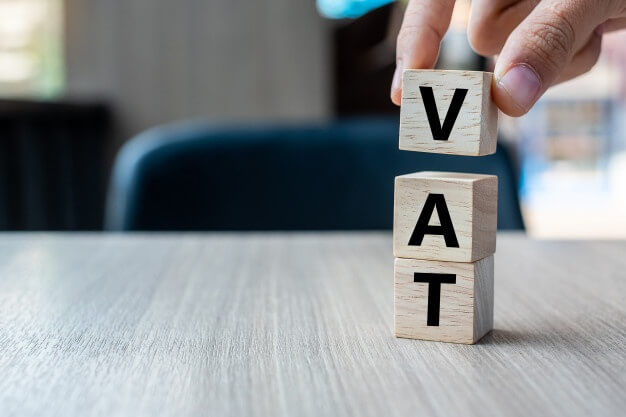VAT Rates in Europe: everything you need to know

Value Added Tax (VAT) – what is it? In life there are two things that are certain: death and taxes. If only there was a way that paying VAT could be avoided…
In this short article we will go over all the essential characteristics of VAT. For example: What is it? Why does it exist? How does it work? Who is eligible for a VAT refund? By the end, all of your questions will be answered!
VAT – what is it?
In the European Union (EU), VAT rates are applied to nearly all goods & services that are bought and sold for use and consumption within the EU. This is why goods that are sold for export are not subject to VAT.
To clarify, VAT is an indirect tax that is collected by businesses on behalf of their local government. Notably, VAT is charged on goods and services people buy for consumption. In short, you will pay VAT nearly everywhere and for everything. But there are exceptions!
All countries in Europe have different VAT rates which depend on the specific goods and services. This article will focus specifically on VAT rates for goods since these are the purchases eligible for refunds.
Worldwide, more than 140 countries apply VAT on goods. Within the EU there is a general consensus for the structure of VAT applications, but each country decides its own rates for particular goods. Subsequently, understanding these varying rates are important when traveling between countries.
VAT rates overview within EU countries
Countries within the European Union have a relatively wide range of VAT rates ranging from 17% to 27%. Laws of the EU state that countries are required to apply a standard VAT rate of at least 15% and a reduced rate of at least 5%.
The lowest VAT rates in Europe start with Switzerland (a non-EU country) with a 7.7% standard rate followed by Luxembourg (17%), Turkey (18%), and finally Germany (19%). On the other hand, the highest VAT rates are seen in the following countries: Sweden, Denmark, and Norway all boast 25% while Hungary has the highest VAT rate set at 27%.
All countries have at least two types of rates, a standard VAT rate which applies to most goods. But in addition, there are possibly multiple reduced VAT rates depending on the goods in question. For instance, reduced rates tend to apply to foods (not including alcoholic beverages), pharmaceuticals, medical equipment, books, and other miscellaneous categories.
Here are the general VAT rates in all other EU countries:
- Austrian 20%
- Belgian 21%
- Czech Republic 21%
- Estonian 20%
- Finnish 24%
- French 20%
- German 19%
- Greece 24%
- Ireland 23%
- Italian 22%
- Netherlands 21%
- Poland 23%
- Portugal 23%
- Slovakia 20%
- Slovenian 22%
- Spain 21%
Here are more details on the VAT rates of our top countries that Woonivers currently operates in: Belgium, France, and Spain.
Belgium: 🇧🇪
- Standard VAT rate: 21%
- Food & books: 6%
- Non-eligible goods for VAT refunds: tobacco products
France: 🇫🇷
- Standard VAT rate: 20%
- Pharmaceutical products: 10%
- Food & books: 5.5%
- Non-eligible goods for VAT refunds: tobacco products, certain pharmaceutical products, cars, car parts, weapons
Spain: 🇪🇸
- Standard VAT rate : 21%
- Food: 10%
- Non-eligible goods for VAT refunds : certain pharmaceutical products, medicines, books, magazines, certain foods: (4%)
If the VAT is included as part of the price on the goods that you purchase and you are a non-EU resident, you are eligible to claim refunds of the VAT paid.
Who is eligible to claim VAT refunds?
As mentioned above, not all consumers need to pay VAT on goods purchased. As a result, his can save eligible customers hundreds or even thousands of euros.
Residents of non-EU countries:
Firstly, residents of non-European Union countries qualify for reimbursements on VAT. Secondly, you must bring these goods out of the EU given that they are in their original state (unused). Thirdly, his privilege is independent of nationality, meaning that a Spanish citizen for example, can live in the United States and still be entitled to Tax Free shopping.
Note: You must have proof of residence stated in documents, for instance: passport, residence permit, green card, consulate card, or other similar document.
Things to consider:
- Goods cannot stay longer than 3 months after purchase.
- Goods must remain unused, in their original condition, consumed in country of residence.
- VAT refund is not applicable to services (hotels, taxis, restaurants, etc.)
How can you claim your Tax Free Shopping benefits?
The traditional Tax Free shopping method can be a hassle. You must fill out tax free forms with the merchant or store in which you purchased your goods and then get these validated and stamped at customs at the airport (which can lead to hours of queuing time). After leaving you must get in touch with the store to organize the reimbursement (which can take up to three months).
Thankfully, there is a better way!
Woonivers is the first 100% digital operator for processing Tax Free reimbursements. As a result, Tax Free shopping is easier, faster, and more reliable. If you want to find out how you can do this whole process through your smartphone, please click here .
